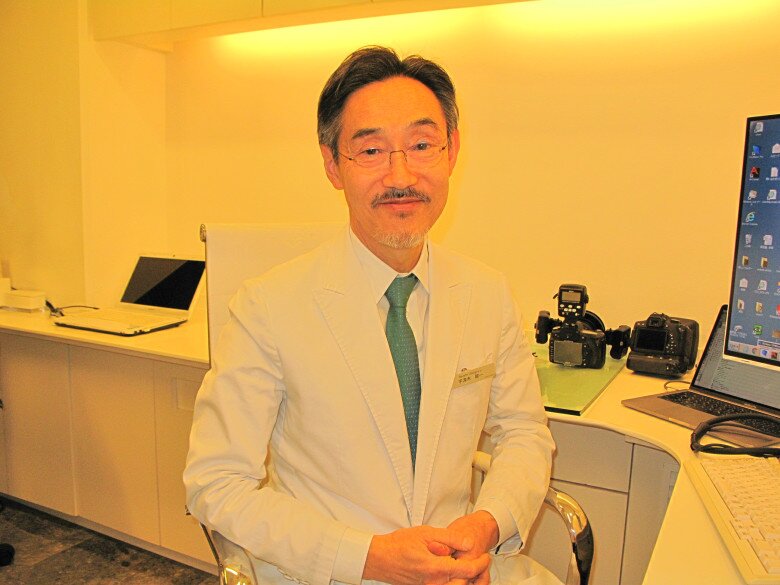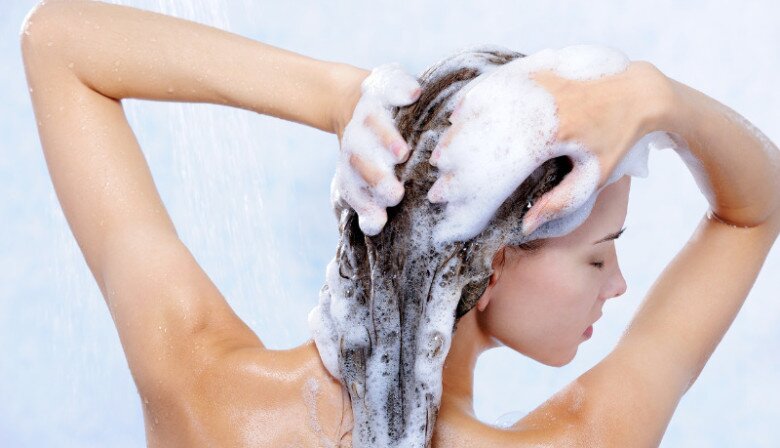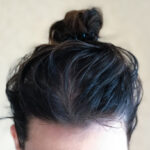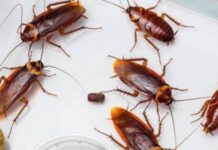“Many of them suffer from mysophobia (fear of germs) and are very meticulous about washing their hair with shampoo. Some people shampoo their hair two to three times a day; some are accustomed to using a large amount of shampoo for five to ten minutes; some only shampoo once a day, but every other day. They also tend to use special and expensive shampoos. However, due to this constant hair care, their hair becomes thinner over time. As a consequence, many experience a loss of elasticity, resulting in thin and soft hair,” says Dr. Ryuichi Utsugi.

Dr. Ryuichi Utsugi has successfully promoted hair regrowth.
Based on his work experience and self-research, Dr. Ryuichi Utsugi decided to stop using shampoo and conditioner and switch to water-only hair washing. Initially, he reduced the frequency of shampoo use and eventually stopped altogether. Seven years have passed since he made the switch, and he still doesn’t use shampoo. Currently, his thin hair condition has improved significantly.
“The soft and thin hair strands have not only become thicker but also much stronger. Because my hair is now fuller and bouncier, I no longer worry about scalp show-through due to thin hair. The delightful thickening of my hair only appeared about three years after I stopped using shampoo. Moreover, my hair can be easily styled; I can even create a hairstyle by simply running my hands through my hair. This is because washing hair with water alone leaves just enough sebum to act as a natural hair styling product. Furthermore, my hair doesn’t have an unpleasant odor; my colleagues even joke that my hair is now as thick and spiky as a hedgehog,” the doctor reveals.
Overusing shampoo can lead to a thinner scalp and less hair growth
According to Dr. Ryuichi Utsugi, overuse of shampoo can cause your scalp to become thinner. This is because most shampoos contain surfactants, which have an extremely strong cleansing effect. These surfactants destroy the protective function of the scalp and weaken the metabolic processes of the scalp.
The surface of the skin, including the scalp, has a “barrier function” that inhibits the invasion of foreign substances and prevents the evaporation of moisture from within the skin. The components that make up this barrier function include natural moisturizing factors that are water-soluble, mainly amino acids, as well as intracellular lipids that are fat-soluble, mainly ceramide, which can connect dead keratin cells and other cells together. These two components are like bricks and mortar, forming a sturdy barrier.

In Dr. Ryuichi Utsugi’s opinion, frequent hair washing leads to a thinner scalp and increased hair loss.
The large amount of surfactants in shampoo can destroy this sturdy barrier. The surfactants dissolve the water-soluble moisturizing factors and fat-soluble intracellular lipids in the keratin cells responsible for forming the protective barrier, rendering the barrier ineffective. When the barrier function is lost, it cannot retain moisture, leading to continuous evaporation of moisture, causing the scalp to become dry and shriveled, with cells struggling to regenerate.
It takes three to four days for healthy skin to recover its damaged barrier function. Since most Japanese people shampoo their hair daily, and some even do it twice a day, the hair’s barrier recovery is destroyed by the shampoo’s strong cleansing power, causing the scalp to become increasingly dry and lacking in moisture.
When the scalp is in a “desert-like state,” the basal cell layer beneath the scalp stops metabolizing, making it difficult for new cells to form. In other words, the scalp loses thickness and becomes thinner due to a lack of cells. When the scalp is thinner, hair growth is hindered, hair falls out more easily, and baldness accelerates.
How to wash your hair with water
When transitioning to water-only hair washing, you will initially experience a period of greasy, smelly hair and scalp itchiness. Unfortunately, some people can’t withstand this adjustment period and revert to using shampoo. However, if you know a few tips, you can overcome this challenging phase.

Washing hair with water alone can be uncomfortable at first due to greasy hair and scalp odor.
If you can’t stand the greasiness of your hair, don’t immediately reach for the shampoo; instead, rinse thoroughly with warm water or wash your hair twice a day. If you truly can’t do without shampoo, use a very small amount.
In addition to washing frequency, pay attention to water temperature. Our body’s internal temperature is 36 to 37 degrees Celsius, and the surface of the skin is slightly cooler by 1 to 2 degrees, typically 34 to 35 degrees. The sebum secreted is in a liquid state at this temperature and can be rinsed with water at 34 to 35 degrees. However, water won’t completely remove sebum from pores like shampoo, but it will leave the necessary amount for hair manageability and protection. Some remaining sebum will oxidize when exposed to air, forming oxides that cause odor, which is normal and can be rinsed with water at 34 to 35 degrees.
This water temperature is comfortable in the summer, but when the weather changes, you may find it a bit chilly. At this point, you can use water at a moderate temperature that is comfortable for most people. One thing to note is that water that is too hot will dissolve the intracellular lipids essential for moisture retention, causing dry hair and scalp.
Is hair washing with warm water effective?
Although Dr. Ryuichi Utsugi has achieved positive results, experts consider this to be solely his personal opinion. In essence, most dermatologists would not entirely agree with this method.
Chinese doctor Xie Zongding believes that without detergents, it is very difficult to thoroughly clean the hair with water alone. This is why those who practice the “no-poo” method initially have to endure greasy hair.
During the process, some people may try using baking soda or vinegar to wash their hair because they feel their hair isn’t clean enough. In reality, these substances have extremely high pH levels and can irritate the scalp more than neutral shampoos. They are likely to cause allergies or contact dermatitis.
From the perspective of dermatologists, the amount of sebum our body produces is closely related to our endocrine system and daily habits. This is why scalp problems often occur when our daily habits are irregular. If the sebum is not cleaned properly, bacteria can easily breed, potentially aggravating scalp conditions.
Since everyone’s scalp and hair conditions are unique, the “no-poo” method is not suitable for everyone. If it causes seborrheic dermatitis or folliculitis, you should purchase a mild shampoo with good cleansing properties to wash your hair.
4 Hairstyles Middle-Aged Women Should Avoid Like the Plague to Prevent Instant Ageing
As a woman enters her 40s, she may want to consider a more subtle approach to hair coloring. Opting for soft, natural hues that complement the skin tone can be a more elegant and sophisticated choice. Along with this, avoiding heavy bangs and styles that are too flat to the head can create a more youthful and modern look.






































